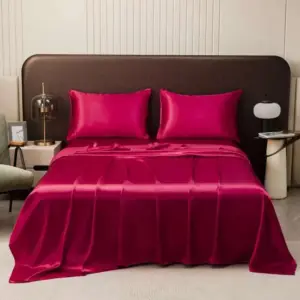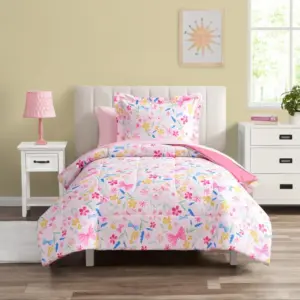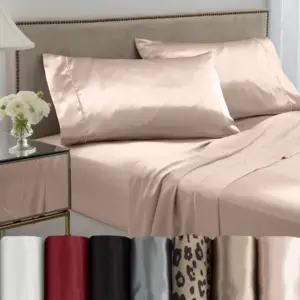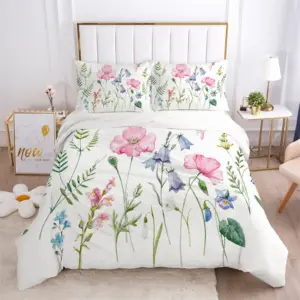The Alluring Appeal of Silk in Bedroom Design
Silk has long been treasured as one of the most luxurious natural fibers in the world, adorning the beds of royalty and the elite throughout history. This remarkable material brings an unmatched elegance to any bedroom, transforming ordinary spaces into sophisticated retreats. Beyond its undeniable beauty, silk offers exceptional functional benefits that make it uniquely suited for bedding.
What sets silk apart is its remarkable natural properties. Unlike standard cotton or synthetic materials, silk naturally regulates temperature—keeping you cool in summer and warm in winter. Its smooth surface creates less friction against skin and hair, which can help reduce bedhead and skin creases. These amazing benefits of Mulberry silk sheets make it a worthwhile investment for those seeking better sleep quality alongside superior aesthetics.
The visual impact of silk cannot be overstated. Its natural sheen catches and reflects light in a way no other fabric can match, creating a subtle glow that adds dimension to your bedroom. The way silk drapes and folds creates a fluid, luxurious appearance that instantly elevates any space. This combination of practical benefits and visual allure makes silk bedding both a functional sleep enhancement and a powerful design statement for discerning homeowners.
Creating a Harmonious Color Palette with Silk Bedding
The unique luminosity of silk adds a new dimension to color selection in bedroom design. Unlike matte fabrics, silk’s natural sheen means colors appear more vibrant and dimensional, changing subtly as light conditions shift throughout the day. This distinctive quality requires thoughtful consideration when selecting hues that will complement both your existing decor and the inherent properties of silk.
When designing with silk bedding, consider how the material’s reflective surface interacts with your room’s lighting. Morning sunlight will bring out different tones than evening lamplight, creating a dynamic, ever-changing focal point. This characteristic allows silk bedding to serve as a versatile design element that adapts to different moods and times of day.
Your luxury silk bedding sets can either harmonize with your existing color scheme or create striking contrast. For bedrooms with neutral walls and furniture, silk bedding offers an opportunity to introduce color without overwhelming the space. Alternatively, in rooms with bolder decor elements, selecting complementary silk tones can create visual cohesion that ties the entire design together.
Timeless Neutrals: Creating Sophisticated Serenity
Neutral silk bedding creates an atmosphere of timeless elegance and versatility that few other design choices can match. These understated hues—ivory, champagne, silver grey, and white—serve as sophisticated foundations for countless design directions. What makes neutral silk particularly special is how differently it reflects light compared to other materials; even the simplest white silk carries a depth and luminosity that flat cotton cannot achieve.
When working with neutral grey silk sheets, consider these pairing suggestions:
* Match silver-grey silk with brushed nickel fixtures and cool-toned woods for a modern approach
* Pair ivory silk with warm woods like walnut or cherry for a traditional, grounded feel
* Use champagne silk with gold accents for subtle glamour without overwhelming shine
* Combine white silk with virtually any accent color for a fresh, adaptable foundation
Neutral silk bedding excels as both a standalone feature and as a sophisticated backdrop for more colorful accessories. Consider adding textured throws or decorative pillows in seasonal colors against your neutral silk foundation for easy style updates throughout the year.
Statement Colors: Adding Drama and Personality
Bold silk bedding creates an immediate focal point that can transform your bedroom’s entire mood. Deep, saturated colors like emerald green, sapphire blue, or ruby red take on exceptional richness in silk due to the fabric’s natural sheen, making a dramatic statement that cotton or synthetic alternatives simply cannot match.
When working with statement green silk sheets or other bold colors, balance is key:
* Pair vibrant silk with neutral walls and furniture to let the bedding stand out
* Choose bedside lamps and accessories that pick up undertones in your silk color
* Consider the room’s natural lighting—bold silks look most dramatic in well-lit spaces
* Use metallic accents that complement your silk tone (gold with warm colors, silver with cool)
Bold silk colors work particularly well in rooms with architectural interest or in minimalist spaces where the bedding becomes the central design element. For spaces with limited natural light, jewel-toned silk can add richness and depth that brightens rather than darkens the overall feel.
Monochromatic and Tonal Approaches for Elegant Sophistication
A monochromatic silk bedding scheme creates subtle sophistication through varying shades of a single color family. This approach showcases silk’s unique ability to express different dimensions of the same hue, creating visual interest through texture and light reflection rather than contrasting colors. For instance, layering champagne sheets with ivory pillowcases and a slightly deeper beige duvet creates elegant depth without relying on high contrast.
In monochromatic silk designs, the fabric’s natural luster becomes even more important, as subtle variations in sheen create visual differentiation between elements. Even when using identical colors, a silk pillowcase reflects light differently than a silk duvet cover, creating natural textural variations that add interest to the design.
This approach works particularly well in contemporary settings where clean lines and subtle variations are prized over bold statements. It’s also ideal for creating calming spaces where visual simplicity contributes to a restful atmosphere. When working with monochromatic silk, consider varying the texture of accompanying elements like throws and rugs to add tactile contrast to the visual cohesion.
Mastering Textural Interplay: Mixing Fabrics with Silk
The smooth, lustrous surface of silk creates a perfect opportunity for textural contrast that adds depth and interest to your bedroom design. While silk alone is beautiful, combining it with complementary textiles creates a richly layered look that appeals to both visual and tactile senses. The key to successful fabric mixing lies in understanding the complete guide to Mulberry silk bed sheets and how they interact with different materials.
Successful textural design with silk bedding involves balancing opposing qualities—rough with smooth, matte with shiny, structured with fluid. Think of silk as your bedroom’s “precious material” that gains emphasis when juxtaposed with contrasting textures. This approach creates visual interest even within limited color palettes.
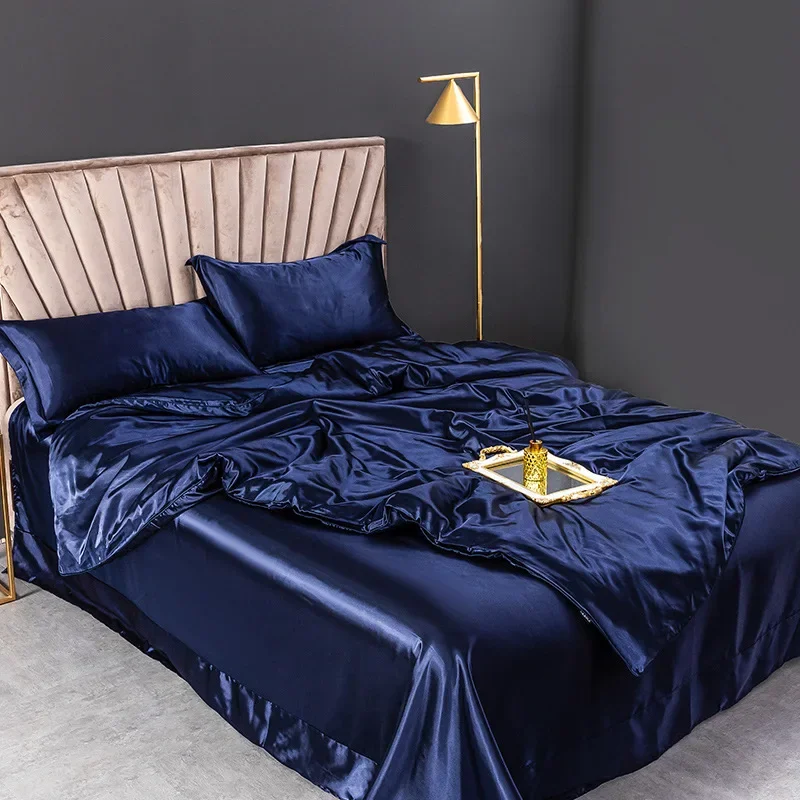
When planning your bedroom’s textile mix, consider both visual contrast and practical comfort. The best silk bedding combinations pair luxury with functionality, creating spaces that are both beautiful and livable. Remember that textural combinations should also reflect seasonal needs—lighter textures for warmer months and richer, heavier textures for cooler seasons.
Luxurious Pairings for Maximum Impact
The most opulent bedrooms often feature silk bedding paired with equally luxurious complementary fabrics. These high-end combinations create sensory richness that elevates your bedroom to true sanctuary status:
Silk + Velvet: Perhaps the ultimate luxury pairing. Silk sheets with a velvet duvet cover or headboard creates magnificent textural contrast—the smooth flow of silk against the plush depth of velvet. Works beautifully in traditional or glamorous settings.
Silk + Cashmere: For unmatched soft comfort, combine silk sheets with a lightweight cashmere throw. This pairing offers subtle textural contrast while maintaining a consistent sense of luxury. Particularly effective in neutral color palettes.
Silk + High-Thread-Count Egyptian Cotton: For those who appreciate subtle luxury, pairing silk pillowcases with premium cotton sheets offers practical comfort with sophisticated visual variation. The slight sheen difference creates interest without dramatic contrast.
Silk + Faux Fur: For dramatic seasonal textural contrast, add a faux fur throw to silk bedding. This combination works especially well in winter months or in cooler climates, adding visual warmth and tactile comfort.
Casual Combinations for Relaxed Elegance
Silk bedding can also be styled for more relaxed, approachable bedroom environments without sacrificing its inherent elegance:
Silk + Linen: This pairing juxtaposes silk’s smoothness with linen’s natural texture and casual wrinkles. Use silk sheets with a linen duvet cover for a bedroom that feels simultaneously luxurious and lived-in. This combination works particularly well in coastal or country-inspired settings.
Silk + Textured Cotton: Pairing silk pillowcases with textured cotton coverlets or matelassé bedspreads creates a comfortable, inviting look with just enough contrast. This combination is perfect for creating year-round bedding that balances luxury with approachability.
Silk + Knit Throws: For seasonal versatility, layer silk bedding with chunky knit throws or blankets. This creates dramatic textural contrast while adding practical warmth. The casual nature of knits helps temper silk’s formality for more relaxed bedroom settings.
Silk + Chambray or Denim: For a surprisingly effective high-low mix, pair silk sheets with chambray or lightweight denim duvet covers. This unexpected combination creates interesting textural contrast while making silk feel more suitable for casual, everyday use.
Designer Layering Techniques for a Luxurious Bed
Creating a luxuriously styled bed involves more than simply placing bedding on a mattress—it requires thoughtful layering that adds visual depth, textural interest, and practical comfort. Professional designers approach bed styling as they would any composition, with careful attention to proportions, color balancing, and textural variation.
The foundation of any well-styled bed begins with high-quality sheets that set both the tactile and visual tone. Building from this base, each additional layer should serve both aesthetic and functional purposes. Middle layers like blankets and duvets add necessary warmth while contributing to the bed’s overall volume and appearance. Decorative elements like throws and pillows complete the composition with opportunities for accent colors, additional textures, and personal expression.

When styling with silk bedding sets, consider the seasonal adjustments that will keep your bed both beautiful and comfortable throughout the year. Summer arrangements might feature lighter layers with silk as the star, while winter styling could incorporate additional warm layers that complement silk’s natural temperature-regulating properties.
The Foundation: Silk Sheets and Base Layers
The proper styling of silk sheets creates the foundation for your entire bed design. Begin by ensuring sheets are smoothly placed with minimal wrinkles—silk’s natural drape makes this easier than with stiffer fabrics. Allow enough sheet material to drape over the sides of the mattress (generally 12-16 inches) for a luxurious appearance, and consider folding the top sheet over your duvet by 12-18 inches to showcase its sheen.
For optimal aesthetic and comfort, select the appropriate weight of silk sheets for your climate and personal preference. Lighter weights (19 momme) create a fluid, delicate appearance perfect for warmer months, while heavier silks (22-25 momme) provide more substantial drape and increased durability suitable for year-round use.
When making the bed, pay special attention to corners—properly tucked sheets create a tailored foundation that enhances the entire composition. For a truly luxurious approach, consider using silk both for fitted and flat sheets, as the consistent texture creates a seamless foundation. If using mixed materials, ensure your silk sheets remain visible at the head of the bed where their lustrous quality can be appreciated.
Perfecting Your Pillow Arrangement
Creating a professional pillow arrangement with silk is both an art and a science. Begin with sleeping pillows placed upright against the headboard, then layer decorative pillows in descending size order. For queen beds, the classic arrangement includes two to four standard sleeping pillows, two Euro shams, and two to three accent pillows. King beds can accommodate two to three additional pillows for greater impact.
The integration of silk pillowcases creates a luxurious focal point, especially when placed prominently in your arrangement. Consider these designer formulas for pillow styling:
- Symmetrical Luxury: Match identical silk pillowcases on sleeping pillows, then frame with larger Euro shams in complementary textures, finishing with 1-3 decorative center pillows
- Layered Elegance: Start with silk-covered sleeping pillows against the headboard, then layer progressively smaller pillows forward in alternating materials and colors
- Minimal Sophistication: Use just two oversized silk pillows with one statement accent pillow for a clean, modern aesthetic
For color coordination, follow the 60-30-10 rule: approximately 60% in your main color, 30% in a secondary color, and 10% in an accent color. This creates visual harmony while maintaining interest across your pillow arrangement.
Integrating Silk Bedding into Different Interior Design Styles
The versatility of silk bedding allows it to enhance virtually any interior design style, from ultramodern to classically traditional. The key to successful integration lies in understanding how silk’s inherent properties—its sheen, drape, and luxurious feel—can be emphasized or subdued to complement different aesthetic approaches.
When matching silk bedding to bedroom themes, consider how the material’s natural characteristics interact with your existing design elements. In some styles, silk bedding serves as a statement piece that anchors the room’s design, while in others, it provides subtle luxury that enhances without dominating the space.
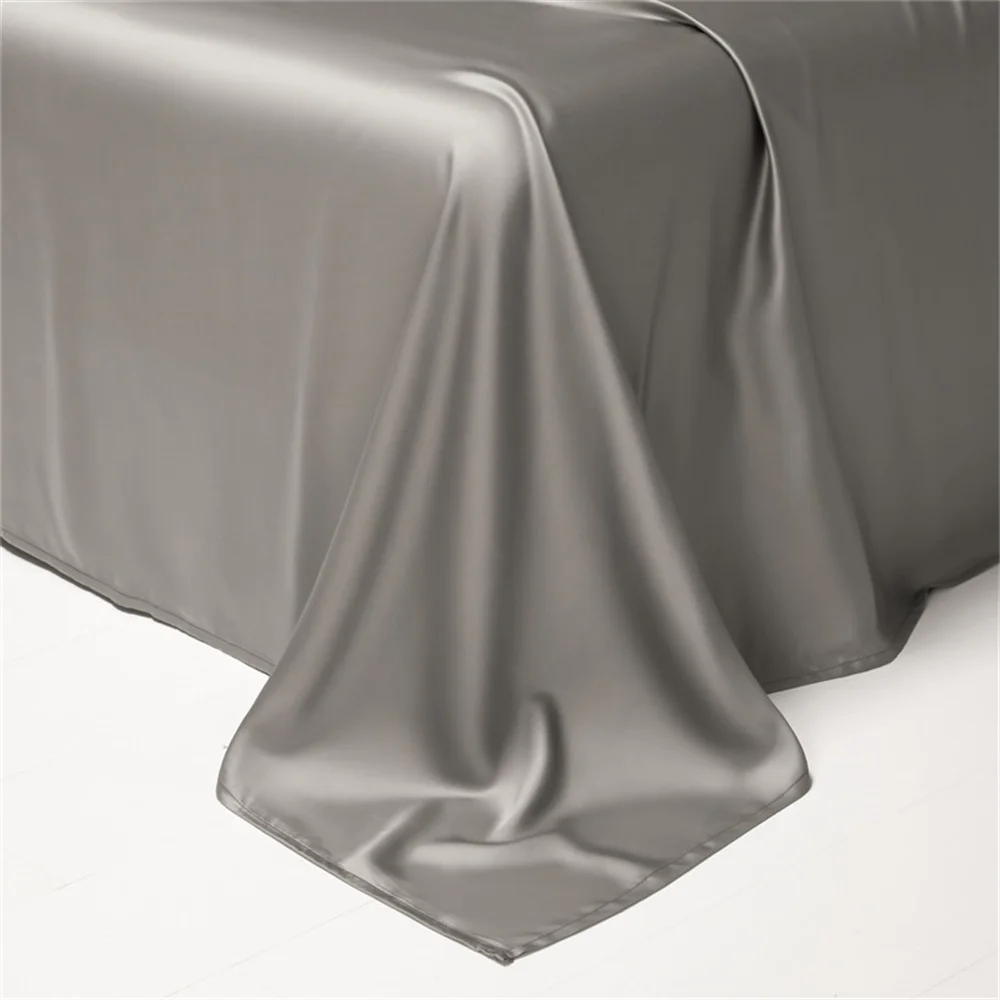
The inherent adaptability of silk makes it an excellent investment for evolving interior designs. As your style preferences change over time, quality silk bedding can transition between different looks while maintaining its timeless appeal. Understanding why choosing Mulberry silk sheets provides long-term design flexibility can help justify the initial investment in these premium textiles.
Modern Minimalist: Sleek Simplicity with Silk Accents
In minimalist bedroom designs, silk bedding adds subtle luxury without disrupting clean lines and uncluttered spaces. The key to incorporating silk into minimalist interiors lies in selecting streamlined forms and a restrained color palette that allows the material’s natural luster to provide interest without overwhelming simplicity.
For modern minimalist bedrooms, opt for silk bedding in monochromatic tones—whites, greys, or blacks—that complement the room’s limited color scheme. The natural sheen of silk adds dimension and visual depth without introducing additional colors or patterns that would distract from minimalist principles.
Pair silk bedding with platform beds featuring clean lines and minimal ornamentation. Wood frames in light finishes like ash or oak create beautiful contrast with silk’s softness, while metal frames in matte black or brushed nickel offer contemporary sophistication. Keep other bedroom elements equally restrained—simple nightstands, limited accessories, and minimal artwork allow the subtle luxury of silk to stand out against the intentional simplicity.
Traditional Elegance: Silk as a Timeless Centerpiece
Traditional bedrooms embrace silk bedding as a natural extension of classic design sensibilities. In these spaces, silk’s historical associations with luxury complement traditional furniture styles and architectural details. Choose silk bedding in rich, saturated colors like deep burgundy, royal blue, or forest green to enhance traditional spaces, or opt for ivory or champagne for timeless neutrals with heritage appeal.
In traditional settings, silk bedding pairs beautifully with substantial wooden furniture featuring detailed craftsmanship. Consider four-poster beds, sleigh beds, or furniture with carved details that echo silk’s luxurious nature. Complement with nightstands and dressers in matching wood tones for cohesive elegance.
Enhance traditional silk bedding with complementary textiles like velvet, damask, or brocade for layered luxury. Window treatments in coordinating fabrics create a cohesive look, while classic lighting fixtures—crystal lamps, sconces with fabric shades, or small chandeliers—highlight silk’s reflective qualities. Traditional spaces can support more elaborate silk bedding ensembles, including pillow shams, bed skirts, and canopies for comprehensive luxury.
Contemporary Fusion: Blending Styles with Silk as the Unifier
Contemporary design’s eclectic nature makes silk bedding an ideal unifying element. The material’s adaptability allows it to bridge different design influences while adding consistent luxury throughout the space. In fusion bedrooms, silk bedding can serve as the common thread that connects diverse furniture styles, architectural elements, and decorative accessories.
For contemporary fusion spaces, consider silk bedding in transitional colors like taupe, slate blue, or soft sage that can complement multiple style influences. The subtle sheen of silk helps connect different textures and finishes throughout the room, creating visual flow between otherwise distinct design elements.
Mix furniture styles confidently when using silk as a unifier—pair a modern platform bed with traditional nightstands, or combine global-inspired accessories with clean-lined contemporary pieces. The luxurious constant of silk bedding helps these diverse elements feel intentional rather than mismatched. Add contemporary artwork and lighting that references colors found in your silk bedding to create additional connections throughout the space.
Selecting Complementary Decor to Enhance Silk Bedding
The beauty of silk bedding is magnified when surrounded by thoughtfully selected complementary elements. From furniture choices to lighting designs, each component of your bedroom should work in concert with your silk bedding to create a cohesive, harmonious space. The goal is to create an environment where silk’s natural properties—its lustrous sheen, fluid drape, and sumptuous texture—are highlighted rather than overshadowed.
When selecting furniture to accompany silk bedding, consider both style compatibility and material contrasts. Hard surfaces provide necessary counterpoints to silk’s softness, while the right finishes can either enhance or subdue silk’s natural sheen. Similarly, lighting choices dramatically impact how silk is perceived in the space—directional lighting can emphasize its reflective qualities, while diffused lighting creates a more subtle glow.
Wall treatments create the backdrop against which silk bedding is displayed. Consider how different colors and textures might interact with your chosen silk. Matte paint finishes often allow silk’s sheen to stand out more dramatically, while textured wallpapers can create interesting contrast with silk’s smooth surface. Artwork selections should complement rather than compete with your bedding’s color scheme and visual weight.
Full-size Silk Sheets, King Size Silk Sheets, Queen Size Silk Sheets, Twin Size Silk Sheets, Washable Silk Sheets
Price range: $95.95 through $178.37 Select options This product has multiple variants. The options may be chosen on the product page100% Silk Sheets, Green Silk Sheets, King Size Silk Bedding Set, Mulberry Silk Bedding Sets, Queen Size Silk Bedding Set
Price range: $1,246.21 through $1,615.22 Select options This product has multiple variants. The options may be chosen on the product pagePink Silk Sheets, Twin Size Silk Sheets
$171.80 Select options This product has multiple variants. The options may be chosen on the product pageFull-size Silk Sheets, Pink Silk Sheets
$136.31 Select options This product has multiple variants. The options may be chosen on the product pageFull Silk Bedding Set, King Size Silk Bedding Set
Price range: $120.99 through $190.49 Select options This product has multiple variants. The options may be chosen on the product pageGrey Silk Sheets, Silk Sheet and Pillowcase Set
Price range: $88.20 through $146.64 Select options This product has multiple variants. The options may be chosen on the product page
Furniture Selection for Silk-Focused Bedrooms
The furniture you pair with silk bedding significantly impacts the overall design cohesion of your bedroom. Headboards create an immediate relationship with your bedding and should be selected with this interaction in mind. Upholstered headboards in complementary fabrics like velvet or linen create textural contrast with silk, while wood headboards in either light finishes (ash, maple) or rich tones (walnut, mahogany) provide natural warmth against silk’s luster.
Nightstands and dressers should balance your bed’s visual weight while providing practical function. For lighter-colored silk bedding, consider furniture in mid-tone woods or painted finishes that create gentle contrast. Dark silk bedding pairs beautifully with lighter wood tones or metallic finishes that reflect and enhance silk’s natural sheen.
When selecting case goods, consider these effective pairings:
* For ivory or white silk: walnut, cherry, or blackened wood provide elegant contrast
* For grey silk: bleached oak, ash, or brushed nickel accents create contemporary harmony
* For jewel-toned silk: bronze, brass, or gold-toned metal details enhance richness
* For pastel silk: whitewashed or grey-toned woods maintain a light, airy quality
Seating options like bedroom benches or reading chairs offer additional opportunities to complement silk bedding. Choose upholstery that either directly coordinates with your bedding for cohesion or introduces complementary textures for interest.
Lighting and Accessories to Showcase Silk’s Beauty
Lighting design significantly impacts how silk bedding is perceived in your bedroom. The fabric’s natural reflective qualities make it particularly responsive to different lighting approaches:
- Bedside lamps with fabric shades in complementary tones create flattering, diffused illumination that enhances silk’s glow without harsh reflections
- Pendant lights with metallic interiors cast a warm directional light that highlights silk’s dimensional qualities
- Recessed lighting with dimmer controls allows for adjustable ambiance that can showcase or soften silk’s sheen depending on mood
Mirrors and reflective surfaces strategically placed to catch and multiply light create additional dimension in silk-focused bedrooms. Consider mirrors with frames that echo elements from your headboard or furniture for design cohesion.
Accessory selection should follow a “less is more” approach in silk-focused bedrooms:
* Choose fewer, more significant pieces rather than numerous small items
* Select materials that complement silk’s luxury—crystal, ceramics with interesting glazes, or handcrafted wood
* Echo colors found in your silk bedding in decorative objects for subtle connections throughout the room
* Consider the visual weight of accessories to maintain balance with silk’s light, fluid nature
Window treatments should frame the bed without competing with silk’s beauty. Sheer panels allow natural light to interact with silk’s reflective qualities, while more substantial draperies can echo colors or textures found in your bedding ensemble.
Creating Specific Moods with Silk Bedding
One of silk bedding’s greatest design strengths is its ability to establish or enhance specific moods within your bedroom. The material’s natural properties—its luster, drape, and tactile quality—can be leveraged to create environments ranging from deeply calming to dramatically luxurious. By thoughtfully combining silk with complementary elements, you can craft a bedroom atmosphere precisely tailored to your emotional and aesthetic preferences.
The mood-setting potential of silk begins with color selection but extends to include texture combinations, lighting strategies, and complementary decor choices. Each design decision contributes to the overall emotional impact of your space, with silk bedding serving as either the foundation or highlight of your mood-focused design.
Understanding how different design elements work together to create emotional responses allows you to use silk bedding as a powerful tool for environmental design. Whether seeking tranquil retreat or opulent sanctuary, silk’s versatility makes it uniquely suited to mood-centric bedroom styling.
Serene Sanctuary: Calming Retreats with Silk
Creating a truly calming bedroom with silk bedding begins with a soothing color palette. Opt for silk in soft blues, gentle greens, or warm neutrals—colors scientifically proven to reduce heart rate and lower blood pressure. These hues take on an especially soothing quality in silk, where their subtle luminosity adds depth without stimulation.
Enhance serenity by combining silk with tactile natural materials like unfinished wood, stone, or organic cotton. These textural counterpoints ground silk’s refinement and connect the space to nature’s calming influence. Keep patterns minimal and flowing rather than geometric or high-contrast to maintain visual peace.
Lighting plays a crucial role in serene silk bedrooms—opt for soft, diffused illumination from multiple sources rather than harsh overhead lighting. Consider Himalayan salt lamps or adjustable bedside fixtures that can be dimmed for evening relaxation. Complete the sensory experience with subtle natural scents like lavender or sandalwood and eliminate electronic distractions to create a true sanctuary for rest.
Luxurious Haven: Creating Opulence with Silk
For bedrooms designed to evoke lavish opulence, silk bedding in rich, saturated colors creates an immediate sense of luxury. Deep jewel tones like emerald, sapphire, or amethyst take on exceptional depth in silk, while classic black or champagne silk exudes timeless sophistication. The material’s natural sheen becomes particularly dramatic in these deeper hues, especially when layered with complementary textures.
Enhance luxury by pairing silk with equally sumptuous materials—velvet headboards, cashmere throws, or faux fur pillows create textural luxury that complements silk’s smooth elegance. Metallic accents in gold, brass, or bronze add warmth and light-reflecting properties that enhance silk’s natural luster.
Lighting should be designed to highlight silk’s reflective qualities—consider crystal lamps, fixtures with metallic finishes, or strategically placed accent lighting that draws attention to the bed. Complete the luxurious atmosphere with substantial furniture pieces featuring detailed craftsmanship, mirrors that amplify light, and carefully selected artwork with rich colors that echo elements from your silk bedding.
Preserving Beauty: Subtle Care Tips for Silk Bedding
Maintaining the visual appeal of silk bedding is essential for preserving its role as a design element in your bedroom. With proper care, silk retains its lustrous appearance and fluid drape for many years, making it not just a luxury purchase but a lasting design investment. Understanding how to clean, store, and protect silk ensures its beauty remains undiminished over time.
Cleaning silk requires gentler approaches than those used for standard bedding. Always check manufacturer’s care instructions, but generally, hand washing in cool water with mild detergent designed for delicates best preserves silk’s natural sheen and texture. Avoid harsh chemicals, bleach, or enzymatic cleaners that can damage silk fibers and diminish their natural luster.
When drying silk bedding, never wring or twist the fabric, as this can damage fibers and create permanent wrinkles. Instead, gently press excess water out between towels, then lay flat or hang to dry away from direct sunlight, which can fade colors and weaken fibers over time. If ironing is necessary, use the lowest heat setting specifically designed for silk, and iron on the reverse side to prevent shine marks that alter the fabric’s natural appearance.
Between cleanings, minimize exposure to elements that can damage silk’s appearance. Keep silk bedding away from direct sunlight when not in use, avoid contact with harsh skincare products containing retinol or acids, and protect from rough jewelry that might catch and pull threads. These small precautions help maintain silk’s beauty as a design element in your bedroom.
Common Styling Mistakes to Avoid with Silk Bedding
Even with the finest silk bedding, certain styling approaches can diminish rather than enhance your bedroom’s overall design. Understanding common missteps helps you maximize silk’s natural beauty while creating a cohesive, well-designed space. The most frequent errors typically involve improper proportion, competing elements, or failure to consider silk’s unique properties when selecting complementary pieces.
One common mistake is treating silk bedding as an isolated luxury element rather than integrating it into your overall design scheme. When silk bedding seems disconnected from other room elements, it can appear as an afterthought rather than an integral design choice. Create connections through color echoes, complementary textures, or thematic elements that tie your silk bedding to other aspects of the room.
Another frequent error is overwhelming silk’s natural elegance with too many competing elements. Silk has an inherent sophistication that shows best when given visual space—cluttering the bed or surrounding area with excessive pillows, throws, or accessories diminishes silk’s impact rather than enhancing it. Follow the design principle of “less is more” to let silk’s natural beauty remain a focal point.
Many homeowners also make the mistake of selecting inappropriate lighting that fails to showcase silk’s unique properties. Harsh, direct overhead lighting can create unflattering glare on silk’s reflective surface, while insufficient lighting diminishes its natural luster. Experiment with different lighting types and positions to find the most flattering illumination for your specific silk bedding.
Balancing Luxury: Preventing Silk Bedding Overwhelm
The luxurious nature of silk sometimes tempts homeowners to create bedrooms where everything aims for maximum opulence. This approach typically backfires, creating spaces that feel overwhelming rather than truly luxurious. The key to successful silk bedding styling is thoughtful balance—allowing silk to be a standout luxury element while ensuring other elements provide necessary contrast and support.
Instead of matching silk bedding with equally luxurious elements throughout the room, create deliberate contrasts that highlight silk’s special qualities. Pair silk with simple, clean-lined furniture, or balance silk’s smoothness with natural textures like linen or wood. These juxtapositions actually enhance perception of silk’s luxury rather than competing with it.
Consider these balanced approaches:
* Pair elaborate silk bedding with simple, architectural furniture rather than ornate pieces
* If using silk in a bold color, keep surrounding elements in neutral tones
* Balance silk’s reflective quality with matte finishes on walls and nearby surfaces
* If using patterned silk, keep other patterns in the room minimal and complementary
Seasonal adjustments help maintain appropriate levels of luxury throughout the year. In warmer months, reduce layers and allow silk sheets to become more prominent, while cooler seasons might call for additional textures that complement without overwhelming your silk foundation. This approach keeps silk bedding feeling fresh and appropriate year-round rather than excessively formal or out of place.


